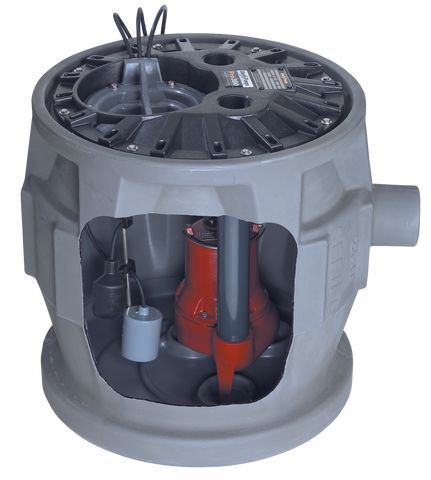
The Difference Between Sewage Pumps and Grinder Pumps
Table of Contents
- Introduction
- What is a Sewage Pump?
- How Does a Sewage Pump Work?
- Types of Sewage Pumps
- Submersible Sewage Pumps
- Pedestal Sewage Pumps
- Effluent Pumps
- Advantages of Sewage Pumps
- What is a Grinder Pump?
- How Does a Grinder Pump Work?
- Types of Grinder Pumps
- Residential Grinder Pumps
- Commercial Grinder Pumps
- Advantages of Grinder Pumps
- When to Use Sewage Pumps
- When to Use Grinder Pumps
- Conclusion
- FAQs
What is a Sewage Pump?
A sewage pump is a type of pump used to move wastewater from homes and commercial buildings to the public sewer system or a septic tank. These pumps are designed to handle solids and other debris that may be present in the wastewater. Sewage pumps come in different sizes and styles, and they can be installed above or below ground.
How Does a Sewage Pump Work?
Sewage pumps use impellers to move wastewater through the pump and into a discharge pipe. The impeller spins at high speed, creating a low-pressure zone that draws the wastewater into the pump. As the impeller rotates, the pressure inside the pump increases, forcing the wastewater out of the pump and into the discharge pipe.
Types of Sewage Pumps
There are several types of sewage pumps, including submersible sewage pumps, pedestal sewage pumps, and effluent pumps.
Submersible Sewage Pumps
- Submersible sewage pumps are installed below ground, and they are designed to handle large volumes of wastewater. These pumps are often used in residential applications, such as basement bathrooms or laundry rooms.
Pedestal Sewage Pumps
- Pedestal sewage pumps are installed above ground, and they are designed to handle smaller volumes of wastewater. These pumps are often used in commercial applications, such as restaurants or small office buildings.
Effluent Pumps
- Effluent pumps are designed to move wastewater that has already been treated by a septic tank or other treatment system. These pumps are often used in residential applications where a septic tank is the primary means of wastewater treatment.
Advantages of Sewage Pumps
Sewage pumps offer several advantages over other types of pumps, including:
- They can handle solids and other debris that may be present in the wastewater.
- They are designed to operate in harsh conditions, such as high temperatures and corrosive environments.
- They are available in different sizes and styles, making them suitable for a variety of applications.
- They are easy to install and maintain.
What is a Grinder Pump?
A grinder pump is a type of pump used to grind up solid waste and other debris before pumping it into the sewer system or septic tank. These pumps are typically used in residential and commercial applications where wastewater must be pumped uphill or over a long distance.
How Does a Grinder Pump Work?
Grinder pumps use a spinning blade to grind up solid waste and other debris before pumping it into the sewer system or septic tank. The grinder pump is typically installed in a pit or basin below the ground, and the wastewater is pumped up and out of the pit through a discharge pipe. The grinder pump is designed to handle large volumes of wastewater and can pump uphill or over a long distance.
Types of Grinder Pumps
There are two main types of grinder pumps: residential grinder pumps and commercial grinder pumps.
Residential Grinder Pumps
Residential grinder pumps are typically used in single-family homes and small businesses. These pumps are compact and designed to handle smaller volumes of wastewater. They are also quieter than commercial grinder pumps. Residential Grinder Pumps are usable with 115 volt receptacles and 20 amp breakers, both of these requirements are standard in residential properties.
Commercial Grinder Pumps
9. Advantages of Grinder Pumps
Grinder pumps offer several advantages over other types of pumps, including:
- They can handle solid waste and other debris that may be present in the wastewater.
- They are designed to pump wastewater uphill or over a long distance.
- They can be installed below ground, making them ideal for areas where space is limited.
- They are available in different sizes and styles, making them suitable for a variety of applications.
When to Use Sewage Pumps
Sewage pumps are typically used in residential and commercial applications where wastewater must be pumped from a lower elevation to a higher elevation or over a long distance. They are also used in areas where the public sewer system is not available, and a septic tank is used for wastewater treatment.
When to Use Grinder Pumps
Grinder pumps are typically used in residential and commercial applications where wastewater must be pumped uphill or over a long distance. They are also used in areas where the public sewer system is not available, and a septic tank is used for wastewater treatment. Grinder pumps are also used in areas where solid waste and other debris may be present in the wastewater.
Conclusion
Sewage pumps and grinder pumps are both used to move wastewater from homes and commercial buildings, but they differ in their function, design, and application. Sewage pumps are designed to handle solids and other debris that may be present in the wastewater, while grinder pumps are designed to grind up solid waste before pumping it into the sewer system or septic tank. When choosing a pump, it's essential to consider the application and specific needs of the system.
FAQs
Q. What is the difference between a sewage pump and a sump pump?Q. Can a sewage pump be used for a septic tank?
Q. How often should a sewage pump be serviced?
Q. How do I know if I need a grinder pump?
Q. Can I install a sewage pump or grinder pump myself?




 Commercial grinder pumps are designed to handle larger volumes of wastewater and are used in larger buildings such as apartments, schools, and hospitals. These pumps are typically larger and louder than residential grinder pumps. These pumps are generally 208-230 volt and higher.
Commercial grinder pumps are designed to handle larger volumes of wastewater and are used in larger buildings such as apartments, schools, and hospitals. These pumps are typically larger and louder than residential grinder pumps. These pumps are generally 208-230 volt and higher.
Leave a comment